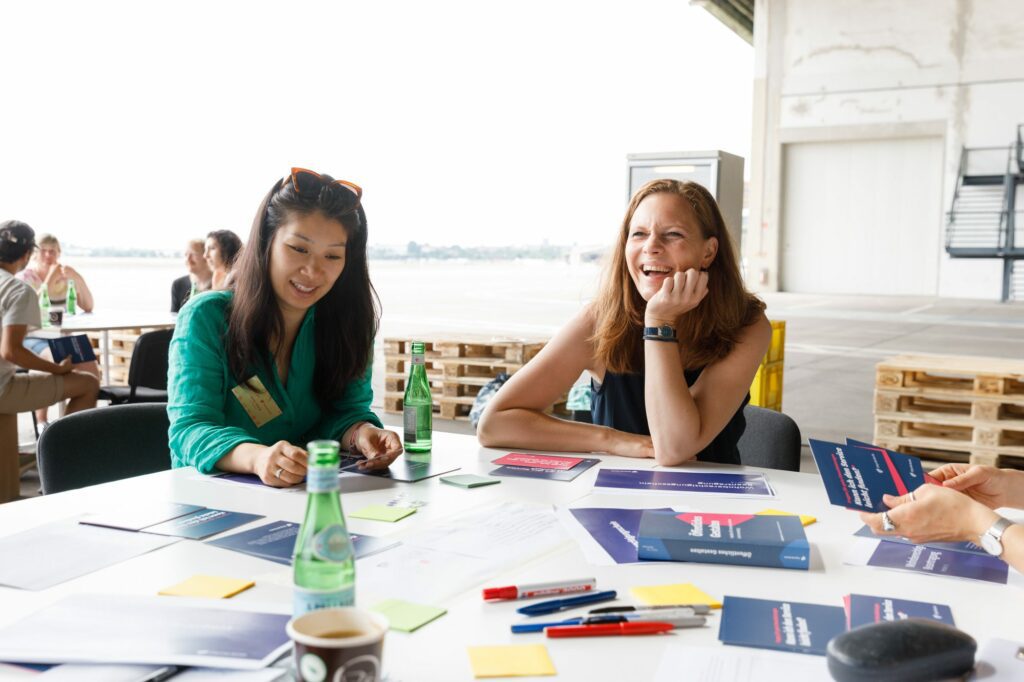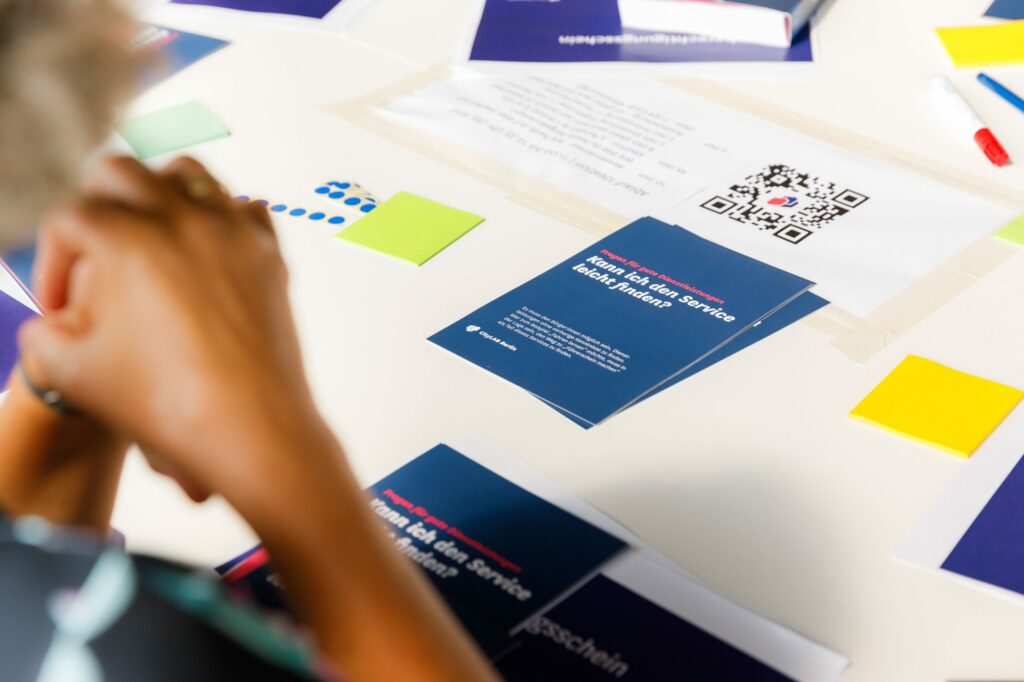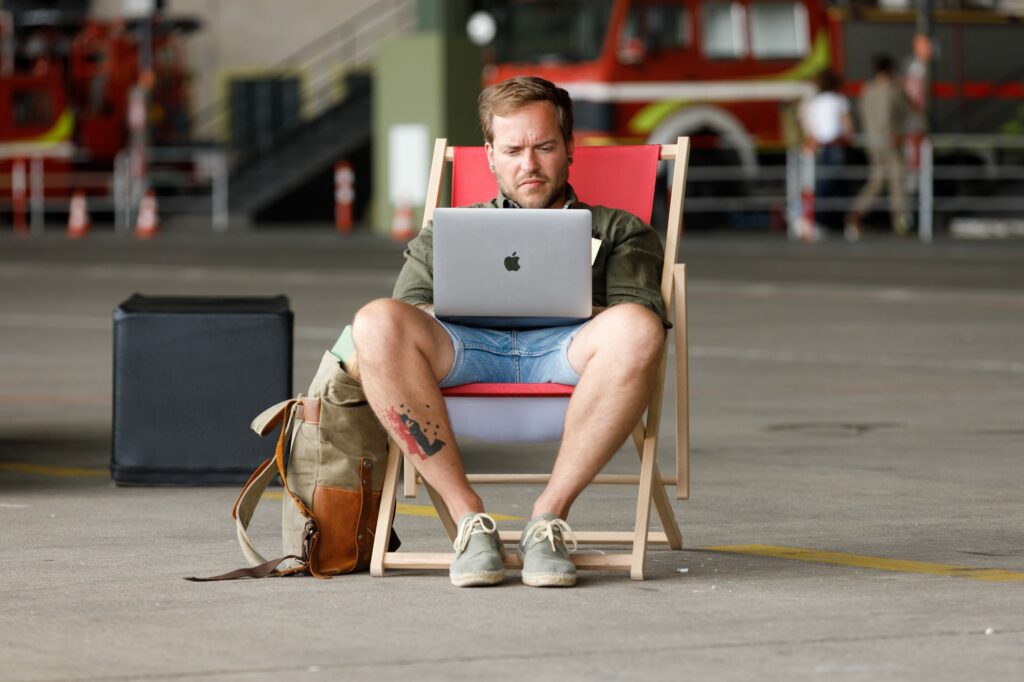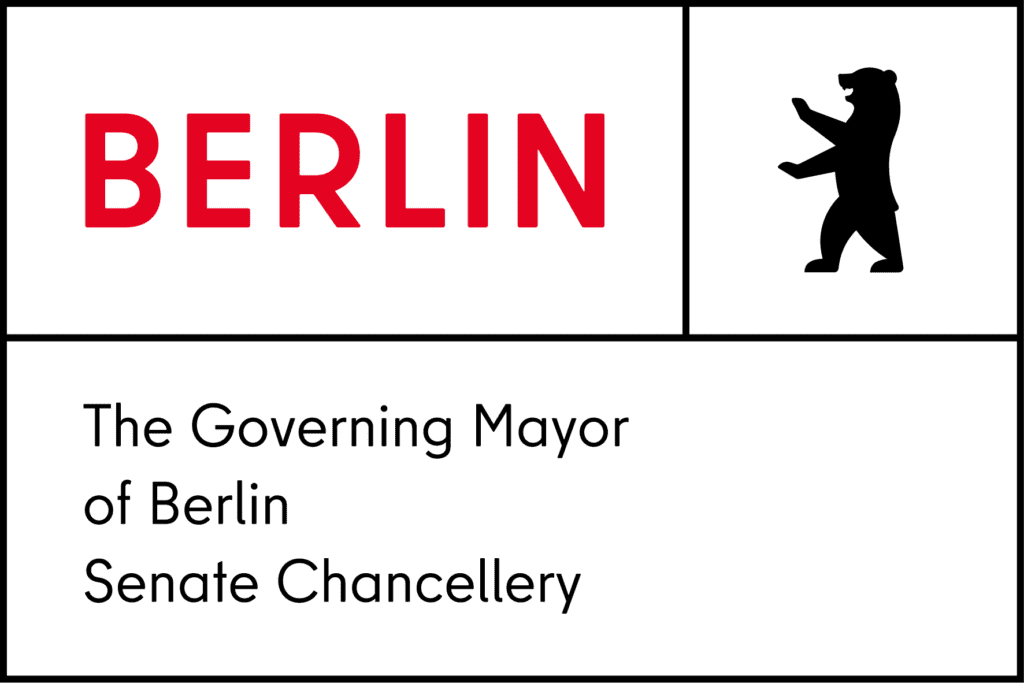Service design: Pursuing the path to the administration oasis
Imagine you need an administrative service, such as a document or permit, and everything goes quickly, smoothly – and tailored to your needs. This is exactly the scenario we mean when we talk about the “administration oasis” at CityLAB. At our summer event celebrating our third anniversary, we not only partied with you, we were also able to provide insights into our work through workshops and presentations as part of an all-day program. The workshop “Berlin – A Service Wasteland? 15 Steps to the Administration Oasis” given by the Admin Innovation Team was aimed at numerous people interested to find out more, both administration employees and members of the general public. The key question at the workshop and the focus of this post is: what is service design and how can we use it to reinvigorate Berlin’s administration?

Redesign this, please!
We set out on the path to the oasis in the halls of Tempelhof Airport. At a workshop there, the Admin Innovation Team looked at the aspects involved in well-designed services and, together with some 30 motivated guests, considered what is specifically important in this regard. To do so, the five-member team drew on the multifaceted toolbox of service design, bringing along with them five of the 15 “Good Service” criteria adapted from the 15 principles described in Lou Downe’s book of the same name. Using selected practical examples – such as applying for a driver’s license or certificate of registration (Meldebescheinigung), or renewing a passport – these criteria were discussed based on fictitious individuals. Participants were encouraged to incorporate their varied perspectives from civil society and administration and develop sound approaches together. Guided by the appropriate questions, a lively exchange of ideas swiftly emerged.
These are some of the examples that were discussed:
· Lisa, Sandra and their one-year-old son need a passport to travel: Do they know what they need to be able to use the service? What might help them here?
· Iqbal wants to drive a car and has to apply for a driver’s license in Germany for the first time: How can he easily locate the service? What might help him do this?
· Sam has got an apprenticeship position and has to move from his home to another town to take it up. Since she has only a low income, she has to apply for a housing certificate (Wohnungsberechtigungsschein). Are the decisions made by the administration communicated in a way that Sam can understand? What might help her?
Topics that went down particularly well included the design of applications that are data-saving, seamless and barrier-free. Transparency in the processing of personal data and the error culture in the administration were also discussed in depth. And participants were excited about the concept of living situations and the expansion of inclusive services.

Service design on board: listen carefully and work towards your goals
Our only hope of getting to the “administrative oasis” is if we have the right baggage with us. So our suitcase is full of different perspectives relating to service-oriented services. Service design is a design discipline in its own right that puts people at the center and seeks to understand what goes on between the person and the service so as to make everything happen smoothly. This is where goals and needs come into play! What are decisions, certain actions and requirements for services or products based on? Service design looks at all stakeholders: the users and the providers, as well as those who seem to be only indirectly involved. With their suitcases packed, service designers run through the entire journey of the parties involved in the context of a service.


Further development of the services and products is then based on a sound understanding of users, their sometimes hidden needs, their behavior, values and motivation. The spirit of the times and changes in society have to be taken into account, too. Based on these findings, solutions are developed to tackle hurdles faced by users. Methods from design research, futurology and service design are used to generate insights.
In this way, working with service design enables digitalization processes to be supported in such a way that seamless and intuitive applications are created, making processes more efficient and transparent. At CityLAB, we show what this can look like in concrete terms using methods of this kind such as the diary study, the modules of the Service Agent Training Program and the manual Öffentliches Gestalten (“Public Design”).
So let’s note the following:
We’re ready to leave the administrative wasteland behind us and head for the oasis. The tools are packed: by working with service design methods in administration, it is possible to promote an understanding that administrative dealings with individual citizens can be regarded as a service. This service is oriented towards concrete benefits, accessibility and comprehensibility for users – in other words ourselves.
Participants’ active involvement in the workshop and their positive feedback have shown us that there is huge interest in the subject of service design in administration. More importantly: there is a willingness in the city to be constructive and engage with the issues. This is a path we are able and willing to pursue together!
Related links:
· Citizen Center of the Future
· Handbuch Öffentliches Gestalten – Book “Public Design”
· Service Agent:innen Schulung – “Service Agent Training Program” (German only)
